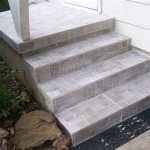Outdoor Home Color Schemes: Enhancing Curb Appeal and Property Value
Selecting an appropriate outdoor color scheme is crucial for a home's overall appearance, influencing its curb appeal and potentially impacting property value. The external color palette sets the first impression, conveying a sense of style, maintenance, and harmony with the surrounding environment. A well-chosen color scheme can accentuate architectural details, camouflage imperfections, and create a welcoming atmosphere. However, a poorly selected palette can detract from the home's aesthetic and even clash with the neighborhood's overall character.
The process of selecting an outdoor color scheme involves considerations beyond personal preferences. Understanding architectural style, regional context, the existing landscape, and the impact of sunlight on colors are all essential factors. Furthermore, local Homeowners Associations (HOAs) or historical preservation guidelines may impose restrictions on color choices, necessitating research and adherence to specific regulations.
This article explores key aspects of outdoor home color schemes, providing insights into selecting harmonious palettes, understanding color psychology, and considering practical factors for a lasting and impactful aesthetic.
Understanding Architectural Style and Color Harmony
A fundamental step in choosing an outdoor color scheme is to consider the home's architectural style. Different architectural styles lend themselves to specific color palettes that enhance their inherent characteristics. For instance, a Victorian home, characterized by intricate details and ornate trim, often benefits from a multi-hued scheme with contrasting colors to highlight its architectural flourishes. Common Victorian palettes include combinations of creams, blues, greens, and burgundies, often with lighter shades used for trim and darker shades for accents.
In contrast, a Craftsman-style home, known for its earthy tones and natural materials, typically favors a more muted and organic color scheme. Browns, greens, grays, and muted yellows are commonly used, reflecting the style's emphasis on simplicity and connection to nature. These colors are often complemented by natural wood finishes for doors, windows, and trim.
Ranch-style homes, often characterized by their single-story layout and low-pitched roofs, offer flexibility in color choices. However, they generally benefit from a cohesive and harmonious scheme that visually elongates the horizontal lines. Earth tones, pastels, and even some bolder colors can work well, depending on the surrounding landscape and personal preference. The goal is to create a welcoming and approachable aesthetic.
Modern homes, with their clean lines and minimalist designs, often utilize neutral palettes such as whites, grays, and blacks. These colors create a sophisticated and contemporary look, emphasizing the architectural forms. Accents of brighter colors, such as blues, reds, or yellows, can be incorporated to add visual interest and personality. However, restraint is key to maintaining the modern aesthetic.
Beyond the general style, the specific details of the architecture should be considered. The color of the roofing material, the type of siding (e.g., brick, wood, stucco), and the presence of stone elements all influence the overall color scheme. The chosen colors should complement these existing features to create a cohesive and visually appealing exterior.
Color harmony refers to the pleasing arrangement of colors that create a sense of balance and unity. Understanding basic color theory principles, such as complementary colors (colors opposite each other on the color wheel), analogous colors (colors adjacent to each other), and triadic colors (three colors equally spaced on the color wheel), can help in creating harmonious color schemes. For example, using complementary colors like blue and orange can create a vibrant and energetic look, while using analogous colors like blue, blue-green, and green can create a calming and harmonious effect.
Considering Regional Context and Environmental Factors
The regional context and surrounding environment play a significant role in determining an appropriate outdoor color scheme. What works well in a desert landscape may not be suitable for a coastal or forested area. The climate, vegetation, and local architectural styles influence the overall aesthetic and should be taken into consideration.
In desert environments, where sunlight is intense and vegetation is sparse, lighter colors are often preferred. Whites, creams, and light grays reflect sunlight, keeping the home cooler and blending in with the arid landscape. Accents of earth tones, such as browns and terracotta, can add warmth and visual interest.
Coastal areas, with their abundance of blue skies and water, often favor cool colors like blues, greens, and grays. These colors evoke a sense of calmness and tranquility, complementing the coastal environment. Whites and light neutrals are also popular choices, creating a fresh and airy aesthetic. Accents of brighter colors, such as corals and yellows, can add a touch of vibrancy.
Forested areas, with their lush greenery and abundance of natural textures, often benefit from earth tones and muted colors. Browns, greens, grays, and beiges blend in seamlessly with the surrounding landscape, creating a harmonious and natural look. Pops of brighter colors, such as reds or oranges, can be used sparingly to add visual interest without overwhelming the natural environment.
The amount of sunlight a home receives also influences the perceived color of the exterior. Colors appear lighter and brighter in direct sunlight, while they appear darker and cooler in shade. Therefore, it is important to test paint colors in different lighting conditions before making a final decision. Painting sample swatches on different sides of the house and observing them throughout the day can provide valuable insights into how the colors will appear under varying light conditions.
Furthermore, the material of the siding can affect how colors appear. Different materials, such as wood, brick, or stucco, have different textures and absorption rates, which can alter the perceived color. Colors may appear richer and deeper on textured surfaces, while they may appear lighter and brighter on smooth surfaces. It is essential to test paint colors on the specific siding material to ensure an accurate representation of the final result.
The surrounding landscape, including trees, shrubs, and flowers, should also be considered when selecting an outdoor color scheme. The colors of the home should complement the existing vegetation and create a harmonious relationship between the built environment and the natural environment.
Practical Considerations and Color Psychology
Beyond aesthetic considerations, practical factors play a crucial role in selecting an outdoor color scheme. The durability and maintenance requirements of different paint colors should be taken into account, as well as the potential impact on energy efficiency. Furthermore, understanding color psychology can help in creating a welcoming and inviting atmosphere.
Lighter colors tend to reflect more sunlight, which can help keep the home cooler in hot climates and reduce energy consumption. Darker colors, on the other hand, absorb more sunlight, which can help warm the home in cold climates. However, darker colors may also fade more quickly in direct sunlight, requiring more frequent repainting.
The durability and maintenance requirements of different paint colors vary depending on the type of paint and the exposure to the elements. Lighter colors tend to show dirt and stains more easily, requiring more frequent cleaning. Darker colors may be more resistant to dirt and stains but may also be more prone to fading. Selecting a high-quality paint with good UV resistance can help prolong the life of the color and reduce the need for frequent repainting.
Color psychology explores the emotional and psychological effects of different colors. Understanding these effects can help in creating a specific mood or atmosphere. For example, blues and greens are often associated with calmness and tranquility, while reds and yellows are associated with energy and excitement.
Neutral colors, such as whites, grays, and beiges, are often perceived as safe and reliable. They create a clean and classic look and can be easily paired with other colors. However, using only neutral colors can create a bland or uninspired aesthetic. Adding pops of brighter colors can help add visual interest and personality.
Ultimately, the best outdoor color scheme is one that reflects the homeowner's personal style, complements the architecture and surrounding environment, and creates a welcoming and inviting atmosphere. Careful planning, consideration of practical factors, and an understanding of color psychology can help in achieving a lasting and impactful aesthetic that enhances the home's curb appeal and property value.

68 Home Exterior Paint Color Ideas Tips

Exterior Color Palette Inspiration For Your Home Lowe S

68 Home Exterior Paint Color Ideas Tips

Architectural Paint Colors Color Collections Sherwin Williams

The 17 Best Exterior House Colors Of 2024 Brick Batten

The 15 Best Exterior Home Color Combinations Bob Vila

5 Easy Tips For Choosing Your Exterior Paint Palette

Exterior House Paint Ideas The Home Depot

Exterior House Paint Ideas The Home Depot
18 Exterior Paint Color Ideas For A Beautiful Home
Related Posts








